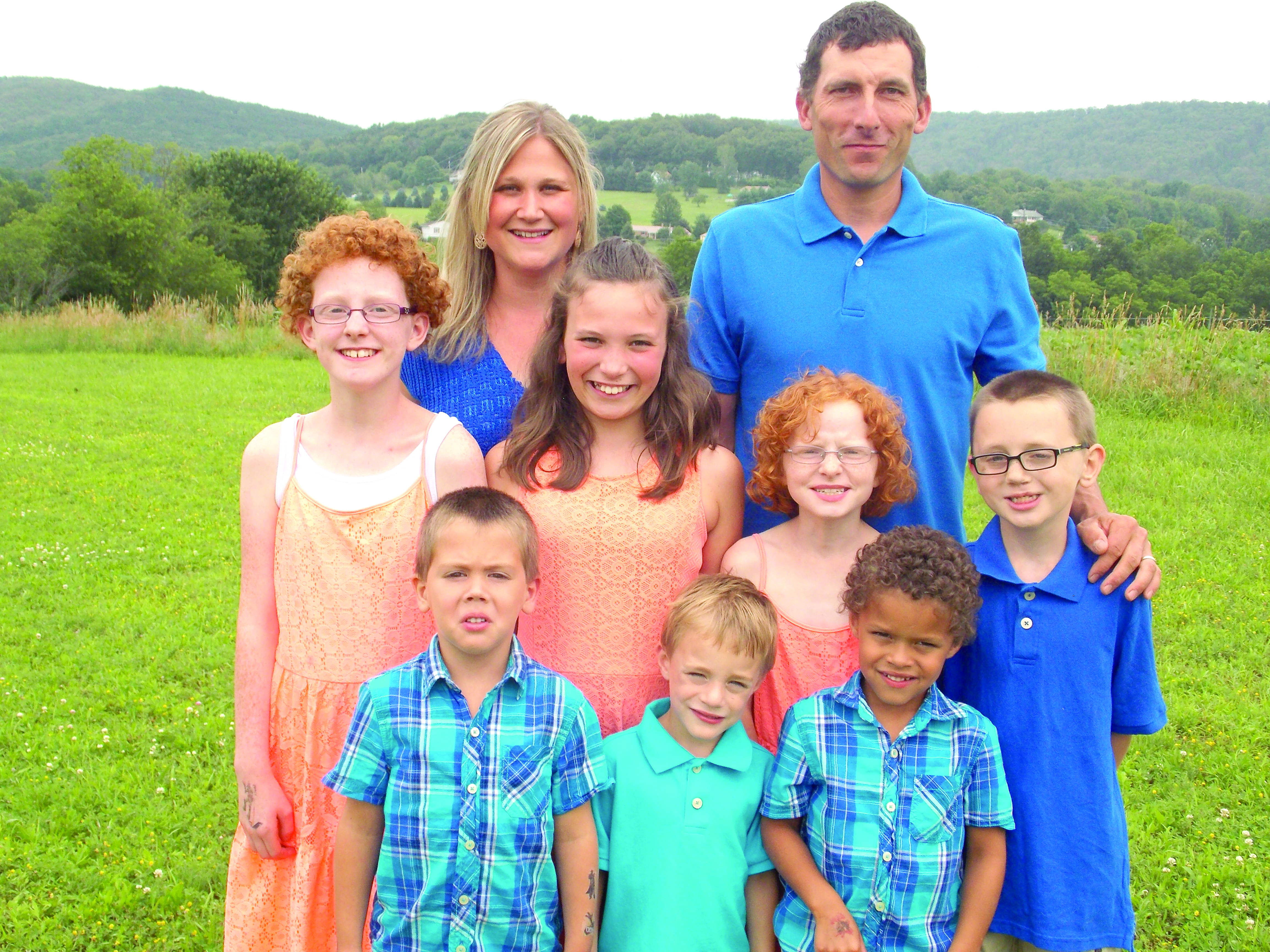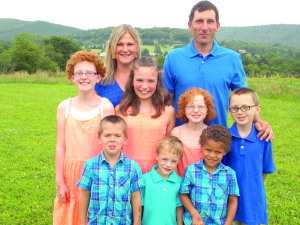Mission vs. myths: One family’s dedication to help children through adoption
For Krista Snyder and her family, adoption comes so natural it’s like riding a bike.
“If you have the desire to go mountain biking and buy the right bike and accessories but then just stop and look at the trails without actually riding them, you will never know how it feels to really get out there or hit a few bumps along the way,” she said.
And so it is with adoption, Krista said. She would know. She and her husband, Michael, have seven children — six of them adopted through the Pennsylvania foster care system.
“In adoption, I feel I have seen and felt the positive effects of giving my life to serve my family and children,” she said. “There are so many joys that outweigh the difficult patches. If a family has the means and is willing to make a permanent lifetime positive impact on a young person’s life, than it would be well-qualified to adopt.”
The process began after the couple gave birth to daughter Julia, who is currently 11. “I am a Type-1 diabetic and nine months of pregnancy and managing diabetes is no picnic,” Krista said. “We did not decide to adopt because we could not have more children. As we thought of how to grow our family, the desire to go through pregnancy became less and our awareness for the ‘orphaned’ and ‘fatherless’ grew much more. We, as a couple, felt called to adopt.
“Our faith and relationship with Jesus Christ compelled us to reach our and be parents to children that needed a mother and father to call their own.”
Outside of Krista, Michael and Julia, the family includes Emily (age 12), Megan (8), Michael (8), Benjamin (5), Nathaniel (5) and James (4).
“Three of our sons were NICU babies born with some health problems. Michael was born with a cleft lip and palate. Nathaniel (4 pounds) and James (1.2 ounces) were both born premature,” Krista said. “Regardless of their circumstances, each child needs the ability to thrive and grow in a loving and nurturing home. Children have a soul and a need for guidance and direction regardless of where they came from.”
What does it take to be a successful adoptive family?
“Adoption is a commitment to parent a young life. That includes directing, nurturing, loving, helping and meeting the basal needs of a young life that will eventually grow up into an adult and hopefully make a positive impact in the community,” Krista said. “To be at that point, you have to learn what it means to be selfless, not selfish and give your life until it hurts so that a child will be raised and taught for his/her future. That can look a lot different for each one of us.”
Debunking 5 myths surrounding adoption …
More than 3,000 children are currently in need of a “forever family” in the state of Pennsylvania — a number that isn’t helped by a variety of misconceptions and myths surrounding the process of adoption.
“People are worried about the cost, the support and the type of kids that they’ll receive — among other things — but the reality is that the adoption isn’t as intimidating as it may seem,” said Becky Rhoads, a permancy case manager with Family Care for Children and Youth out of Milton.
Some of the common myths of adoption, according to Rhoads, and the reality behind each include:
Adoption is too expensive.
“People think it is going to cost a lot of money to adopt a child, but in reality, most of the families I work with are foster parents that are adopting children who were placed in their home, and in that case, the adoption is pretty much free,” Rhoads said. “We reimburse legal expenses, travel expenses and ultimately there is very little out of pocket. We even pay for the clearances.”
Plus, families typically receive a daily stipend to help with day-to-day needs, depending on the agency they are working through and the child’s individual needs. Children who are older, have certain medical issues, different ethnic backgrounds, part of a sibling group that needs to stay together or other special need can not only become legally free for adoption, but also may qualify for a monthly subsidy even after the adoption is finalized that continues until their 18th birthday.
“Families who adopt do it because they have big hearts and want to sincerely help children — not to collect a subsidy — but it definitely can help, especially as certain children need additional appointments or a parent may need to stay at home instead of work in order to help the child,” Rhoads said. “Overall, the expense is not the big issue some people make it out to be. You don’t need to be rich or live in a big house in order to adopt. While there are some income requirements, we are more interested in finding people who genuinely want to make a commitment to children — and then we help them in any way we can.”
Adoption opens your family to scrutiny.
“A lot of people think the process is really involved and that agencies overly pry into your home and lifestyle, and there is some of that, but only what is necessary to make sure the family and the child are a match,” Rhoads said. “The process itself is as streamlined as possible with training and assistance each step of the way. We do background checks and make sure that each family is a safe environment for the children who so desperately need a home. We work with families to help increase the level of success for everyone involved.”
Kids who need adopted are bad kids
“Some children in the adoption network have a lot of baggage and some behavioral issues. But for many of them, once they are in a stable home with structure and love, a lot of those behaviors go away,” Rhoads said. “Agencies put a lot of effort into preparing the family and offering support througout the process. You aren’t in it alone. And a lot of time, when parents have a better understanding of where the child has come from, they don’t take the behaviors so personally and makes it easier to work through any bumps.”
Adoption takes a lot of time
“Technically, the child needs to be in the home for six months before anything can be finalized, but it used to take a very long time for children to be adopted,” Rhoads said. “Now, we’re telling parents to figure on two to three years, but it can be much faster than that, too. Things are definitely happening more quickly depending on the child and his situation.”
Adoption is too much of a commitment up front
“There are a lot of ways to get involved with the process without the fear of commitment until you get an idea of what to expect. I highly recommend doing foster care first,” said Rhoads. “It allows you to get an idea of what is expected. You get to work with kids, figure out your strengths without the pressure of long-term commitment for either the family or the child.
“You also get more experience working with the agency, receive additional training that will help you work better with children and develop a better support system. You get a better chance to know the children and, many times, a foster situation leads to an adoption with the same child. This approach takes the pressure off both sides.”
Another option is respite care.
“If you aren’t sure you want to do it full time, are too old or have other obligations up front, you can become a respite resource. Respite homes are where children go when the foster family needs a break or to attend to other matters. It could be a weekend or a few days here or there,” Rhoads said. “It gives families a taste of what to expect and allows the children to meet new people.”
For more on Family Care for Children and Youth or foster care opportunities, call (800) 747-3807. For more on adoption opportunities in the state, to meet some children who are in need of a forever family or other details, visit adoptpakids. org.


